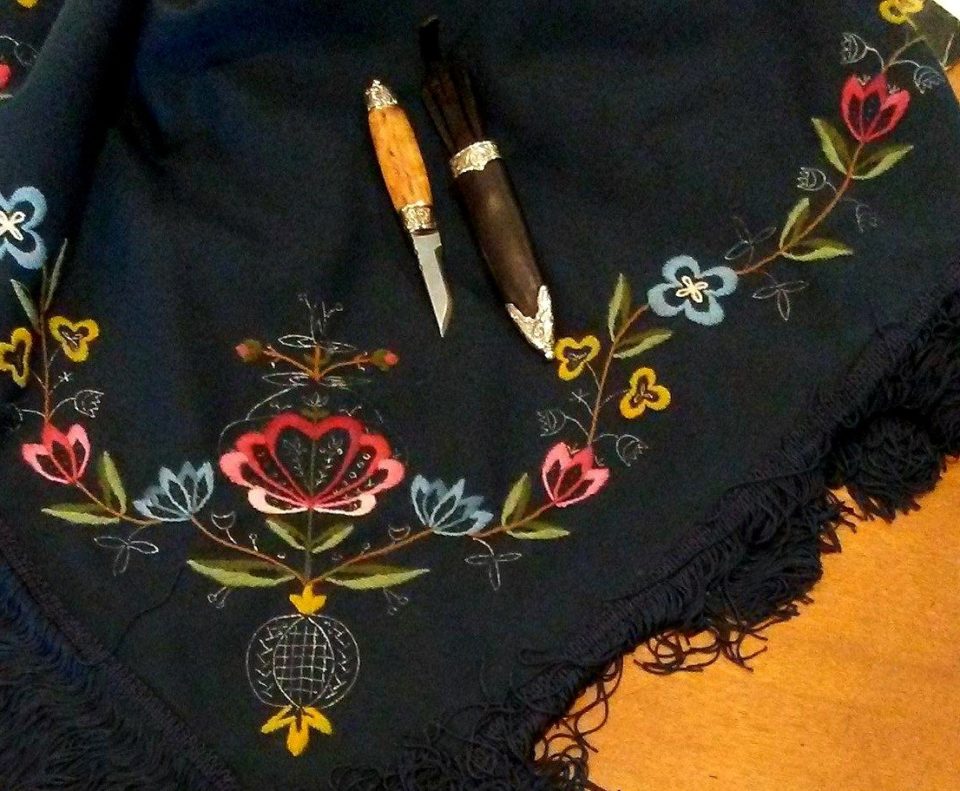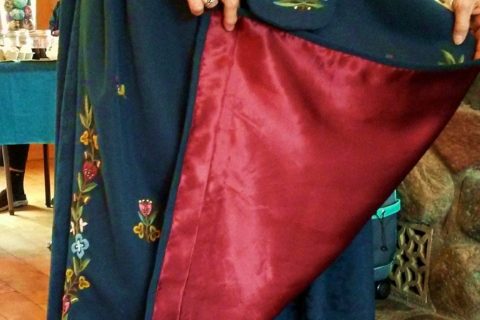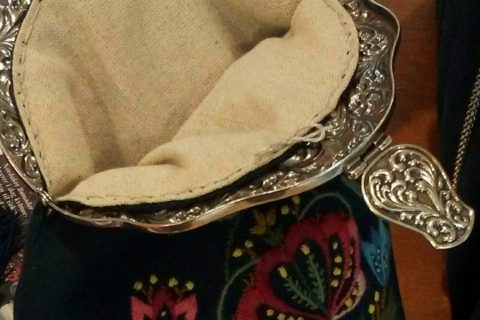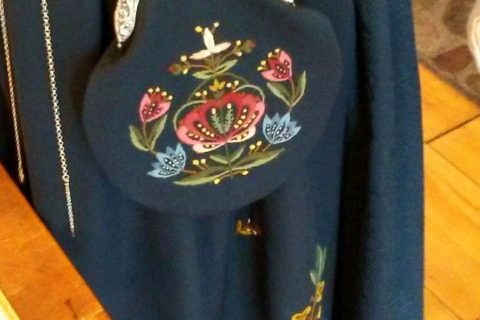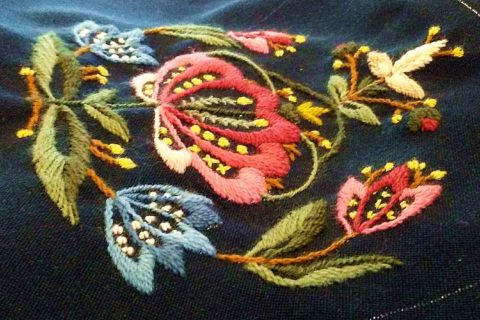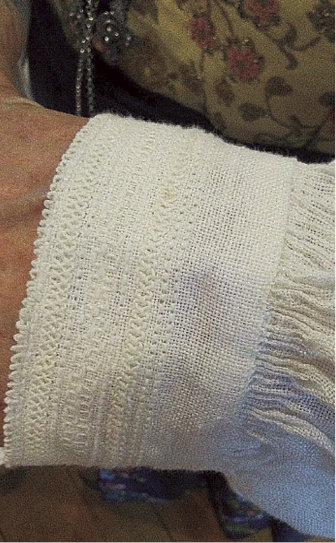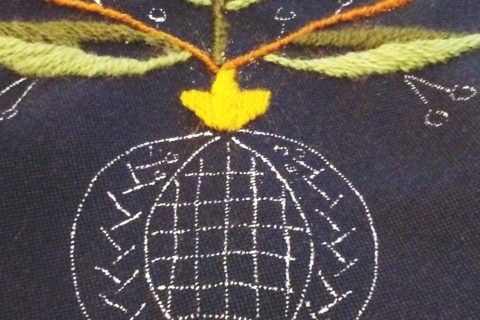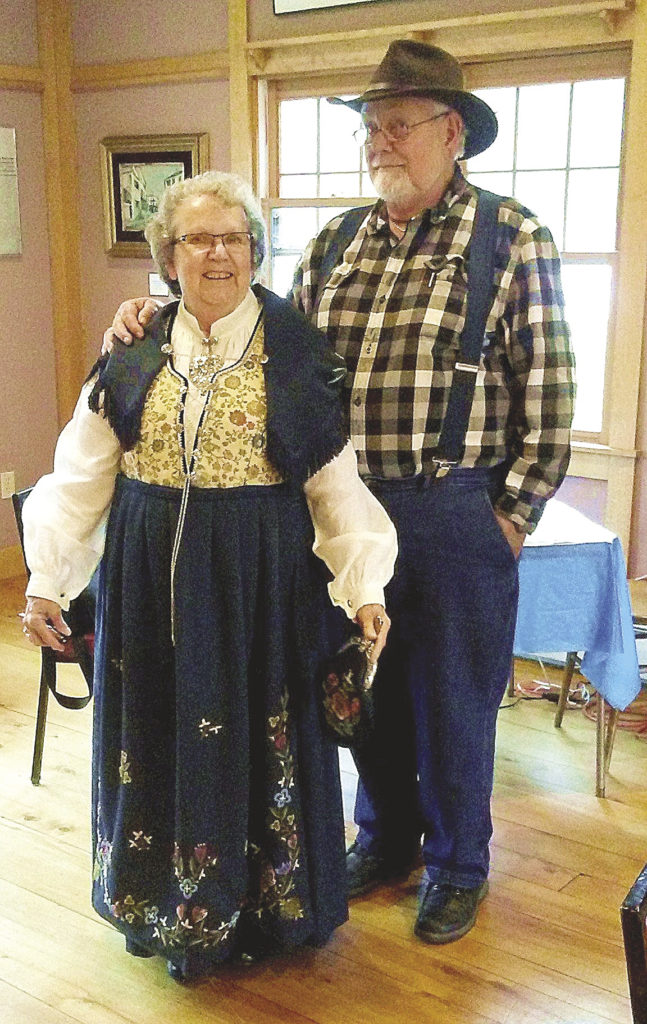
Nancy Hanson of Lutsen has done quilting and sewing for years. When she picked up a brochure for a folk school in Iowa, she had little idea it would be the beginning of a major project. But almost four years later, Hanson is working on the finishing touches of her very own Norwegian bunad.
“I’m not fully Norwegian, but my husband is,” Hanson explained. “I saw an ad for a bunad class, and decided it’d be something I’d like to try.”
The class was at the Vesterheim Folk Art School in Decorah, Iowa. As part of the National Norwegian-American Museum & Heritage Center, it specializes in teaching Norwegian craft and keeping Scandinavian traditions alive. It was there that Hanson learned of the opportunity to create a traditional Norwegian bunad.
“The class was taught by Sue Sutherland from Ely,” Hanson explained. “I went to her house and got started. That was in 2014, so it’s been three-and-a-half years!”
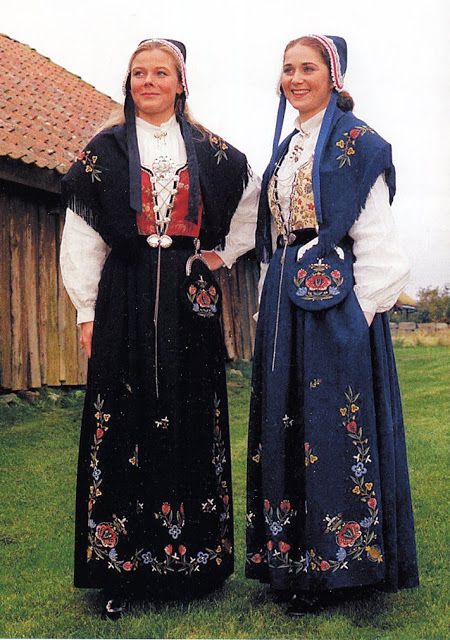
A bunad is a traditional folk costume, originating in Norway’s rural areas. Rather than mirroring the mainstream styles of urban areas, folk costumes were unique and distinctive. They were made from thick wool, a cloth that both provides warmth and doesn’t wrinkle. While there are bunads for both men and women, the women’s style that Hanson is making typically included a shawl, skirt, apron, blouse, purse, cap and belt. The specific designs of these items varied depending on which region of Norway they came from. Additionally, certain elements of the costume could be used to distinguish individual status, such as if the wearer was married or unmarried.

While the traditional clothing worn by farmers began to fade following industrialization, a renewed interest in Norway’s rural traditions began to grow in the late 1800s, including an interest in traditional clothing. Norway was under Swedish rule then, and wearing a rural folk costume was a sign of Norwegian identity. Hulda Garborg, a proponent of Norwegian culture at that time, is often credited with the modern interest in bunad tradition. In the early 1900s, Garborg published a pamphlet on folk costumes, and their popularity steadily increased throughout the 20th century, becoming the bunad we know today.
It’s estimated that over half of Norwegians currently own a bunad and wear them for special occasions, such as festivals and weddings. Groups like the Norwegian Institute for Bunad and Folk Costume and the National Bunad Council assure that bunad making continues in an authentic manner. A classification system places bunads in categories depending on how original or authentic the designs are. New patterns are reviewed by such councils and if they don’t make the cut for authenticity, they are classified as a generic folk costume and not as bunads. As I looked over the detailed patterns of Hanson’s dress, she explained that sewing a bunad is no individual endeavor.
“They won’t let people just buy a pattern and sew it yourself. The pattern, fabric, everything was purchased in Norway.”
These strict guidelines mean that those wishing to sew a bunad for the first time need to learn from someone more experienced. For Hanson, the decision to work with Sutherland was a good fit. Sutherland is the owner of Bunad Butikken, a business in Ely dedicated to selling bunad materials and teaching classes. As such, Sutherland is experienced in every step of bunad making, and her proximity to Hanson’s home in Lutsen meant that Hanson could meet with an expert several times a year to work on the project.
“I went to Sue’s house to get started, and I go up three to four times a year to be taught the next step. She’s taught me the stitches and everything.”
Hanson is working on a jelsa bunad, which comes from the Rogaland Region in southwest Norway. Nancy’s husband, Marland Hanson, is Norwegian, and his father came from the Rogaland region. Choosing this specific design paid homage to the family’s heritage. The patterns were all in Norwegian, and required some translating to understand the next steps.
In addition to constructing the basic shape, the jelsa bunad includes intricate embroidery, detailed stitching on the sleeves and collar, and even some handmade silver jewelry. The first step was to begin the embroidery on the apron. Hanson said that some of her fabric came with the jelsa design painted on with a special fabric paint. She could then follow the pattern to find (and translate) the proper color and then stitch the design over the painted guideline.
“I’m a knitter, a sewer and a quilter,” explained Hanson, “but this is still a new experience.”
Indeed, taking on a four-year sewing project is not for the faint of heart. While a good grasp of the fiber arts is necessary groundwork for sewing a folk costume, the specific process will still be a new experience for those who have never attempted it before. Still, for many such as Hanson, the idea of owning a piece of Norwegian tradition that you’ve sewn yourself is worth the effort.
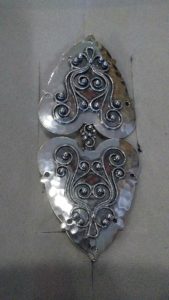
This fall, Hanson plans to take her love of the bunad to the next level: she and her husband are joining a group led by Sutherland to venture to Norway for two weeks in September. There they will learn more about the history of bunad making and can see firsthand where the tradition came from. The tour will include sightseeing, visiting the Norwegian Institute for Bunad and Folk Costumes, and the opportunity to take classes from Norwegian instructors. After several years of dedication to her bunad, the chance to see where the designs, materials and expertise came from will be the trip of a lifetime.
For those wishing to learn more about the bunad making, Hanson recommends contacting Sutherland at Bunad Butikken: bunadbutikken.com. She offers classes several times a year, and is open to teaching both groups and individuals.
Three and a half years of sewing seems like a lot of work. But seeing Hanson now modeling her bunad, able to wear a piece of her family’s heritage, it was work that was definitely worth it.


